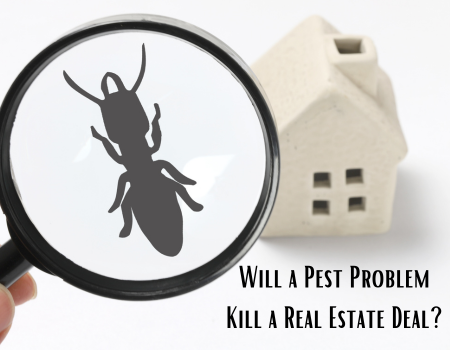Buying or selling a property is a significant undertaking, and unexpected challenges can arise during the process. One such challenge that can potentially derail a real estate deal is a pest problem. Whether it’s termites, rodents, or other unwelcome critters, the presence of pests can raise concerns for both buyers and sellers. In this article, we’ll explore the impact of pest problems on real estate transactions and strategies for navigating these issues.
The Impact of Pest Problems on Real Estate Deals:
- Property Value and Perception: Pests can adversely affect a property’s value and the perception of potential buyers. The discovery of termites, for example, may lead to concerns about structural damage, resulting in a decrease in the perceived value of the property.
- Structural Damage and Safety Concerns: Pests like termites and carpenter ants can cause significant structural damage over time. The discovery of such issues may trigger safety concerns and the need for costly repairs, potentially leading to renegotiations or deal cancellations.
- Financing Challenges: Lenders may be hesitant to finance a property with known pest issues. Pest-related damage can raise questions about the property’s structural integrity, making it difficult for buyers to secure a mortgage.
- Legal Disclosures: Sellers are typically required to disclose known issues with the property, including pest problems. Failure to disclose such issues can lead to legal complications and potentially jeopardize the sale.
Strategies for Sellers:
- Pre-listing Inspection: Consider conducting a pre-listing inspection to identify and address any pest issues before listing the property. This proactive approach allows sellers to address concerns and present a well-maintained property to potential buyers.
- Professional Pest Control Services: Engage professional pest control services to address and resolve any infestations. Retaining documentation of pest control measures taken can be reassuring to potential buyers.
- Regular Maintenance: Implement regular maintenance practices to prevent future pest problems. Simple measures like sealing entry points, addressing moisture issues, and routine inspections can go a long way in maintaining a pest-free property.
- Transparent Communication: Practice transparent communication with potential buyers. Disclose any past pest issues, the measures taken to address them, and provide documentation of any repairs or treatments. Openness can build trust and foster a smoother transaction.
Strategies for Buyers:
- Thorough Inspections: Prioritize a thorough home inspection that includes a pest inspection. A qualified inspector can identify any existing pest issues and assess potential risks, allowing buyers to make informed decisions.
- Negotiation Opportunities: If pest issues are identified, use the information as leverage for negotiation. Buyers may request repairs, treatments, or a reduction in the sale price to account for the cost of addressing pest-related concerns.
- Contingency Clauses: Include contingency clauses in the purchase agreement that allow for the cancellation of the deal or renegotiation if significant pest issues are uncovered during the inspection.
- Consult with Pest Professionals: If concerns arise during the inspection, consult with pest professionals to understand the extent of the issue and the associated costs. This information can guide decision-making and negotiations.
While a pest problem can pose challenges in a real estate transaction, it doesn’t necessarily have to be a deal-breaker. Both sellers and buyers can take proactive steps to address and navigate pest issues transparently and efficiently. Clear communication, thorough inspections, and strategic negotiations can help mitigate concerns and ensure a smoother real estate transaction for all parties involved. Whether you’re buying or selling, being informed and proactive about pest-related issues is key to successfully navigating the complexities of the real estate market.

